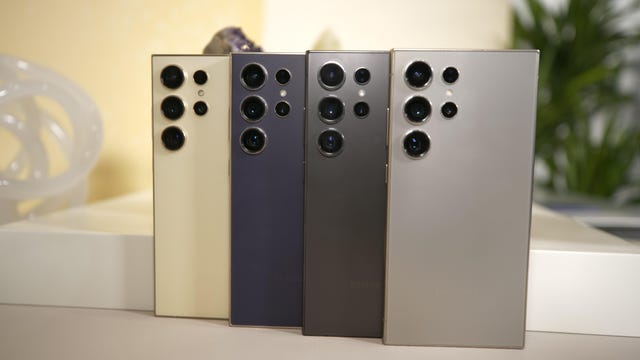Technologies
Galaxy S24 Ultra: One Day With Samsung’s New Phone
Circle to Search and Instant Slow-Mo are my favorite new features so far.
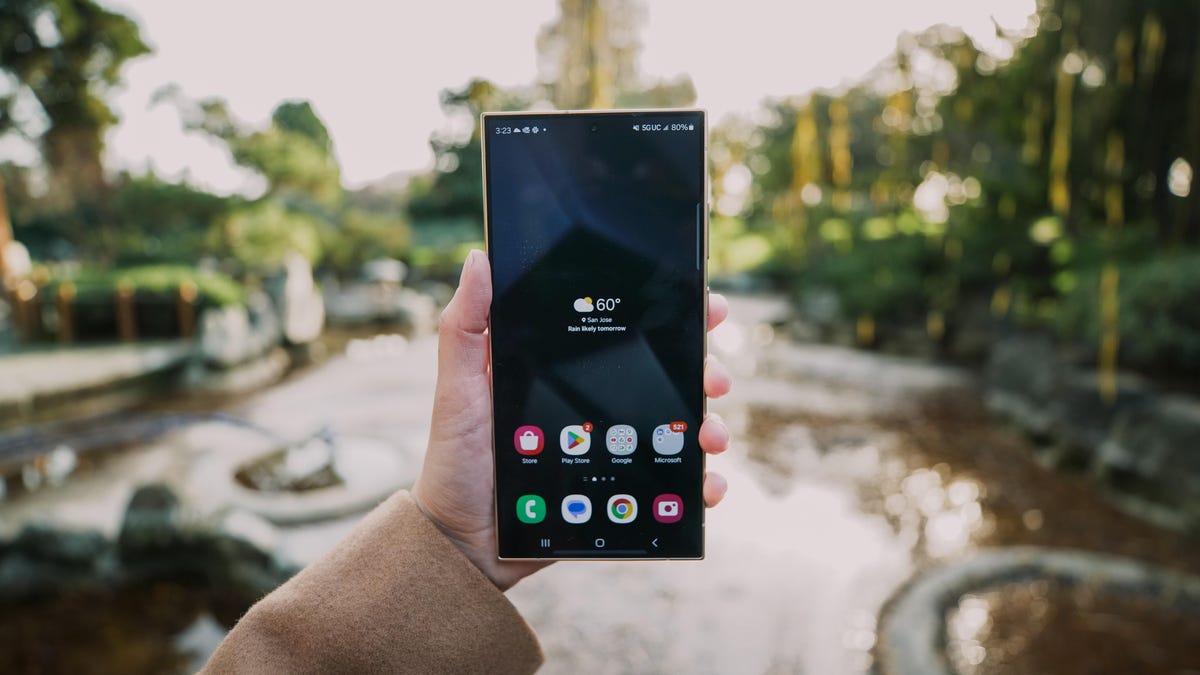
The Galaxy S24 Ultra may look a lot like the Galaxy S23 Ultra at first glance. But Samsung’s newest phones are the first to come with Galaxy AI. It’s an umbrella term for tools and features powered by generative AI that can generate content and responses that sound conversational (but aren’t always accurate) after being trained on data. It’s the same flavor of AI that fuels ChatGPT, and the Galaxy S24 lineup is an example of how the tech is being applied to new smartphones.
I’ve been using the Galaxy S24 Ultra for a day, and one Galaxy AI feature has stood out to me in that short time: Circle to Search. I just press and hold the home button and draw a circle around anything I see on screen to launch a Google search for that object. It works intuitively and reliably so far and feels practically useful in everyday life unlike other AI-powered additions to the Galaxy S24.
Read more: Samsung’s Galaxy Ring Will Need Less of Your Attention Than a Smartwatch
I need more time with the S24 Ultra to truly assess the usefulness of Galaxy AI and to test out the new 50-megapixel telephoto camera among other updates.
As I wrote in my initial first impressions story, Samsung’s new AI features don’t feel strikingly new and different from the generative AI features from Microsoft and Google. Instead, the Galaxy S24 Ultra feels like a statement about how generative AI features are becoming table stakes on new phones.
Circle to Search is the standout Galaxy AI feature so far
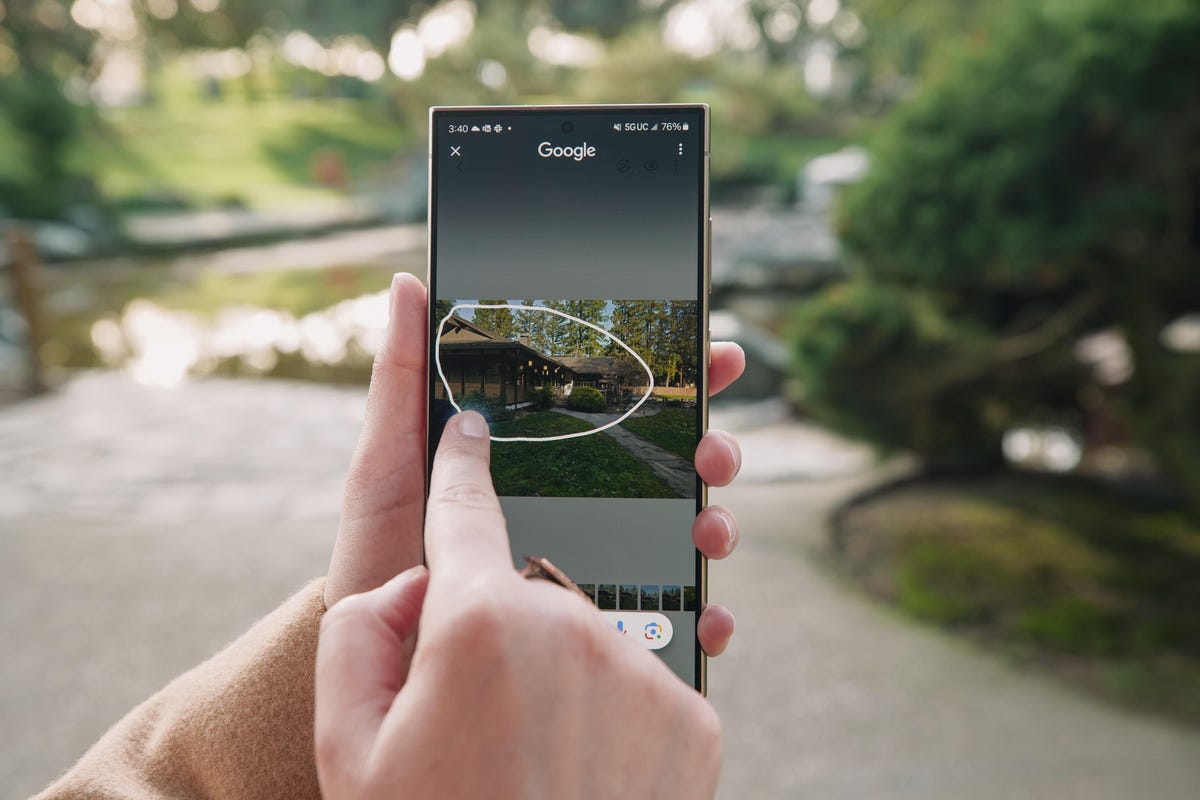
Galaxy AI is a collection of features that spans everything from photo editing to texting, phone calls and note-taking. There’s a tool for moving and removing unwanted objects from photos and refilling the scene so that it looks natural, for example. The Samsung Notes app can organize notes into bullet points and phone calls can be translated between languages in real time. (Check out my first impressions story for a list of some of the top Galaxy AI features.)
But Circle to Search is the one that stood out to me the most. The feature, which was developed in partnership with Google, allows you to search for almost anything on your phone’s screen just by circling it. Based on the time I’ve had with it so far, Circle to Search seems fairly accurate in determining the type of content I’m looking for based on what I’ve circled.
For example, when I circled an image of the character Siobhan Roy from the HBO drama series Succession in a news article, the Galaxy S24 pulled up results that showed more information about the actress Sarah Snook, who plays her in the series. But when I just circled her outfit, I got results showing where to buy cream-colored blazers and slacks similar to those she was wearing in the image.
I’ve also been using the Galaxy S24 Ultra to organize my notes during the process of writing my review and transcribe meetings. I appreciated being able to have the phone turn my list of tests I’d like to run on the Galaxy S24 Ultra into neat and tidy bullet points. Samsung’s Recorder app also transcribed a meeting and summarized the key points into bullet points. While I wouldn’t rely on those bullet points alone for work-related tasks, it was a handy way to see which topics were discussed at specific timestamps in the conversation.
That feature isn’t unique to Samsung’s Recorder app; Google’s app can also do this, as can the transcription service Otter.ai. But combined with other features like the ability to automatically format notes, I’m beginning to see how generative AI could make phones more capable work devices.
Galaxy S24 Ultra’s new telephoto camera and slow motion
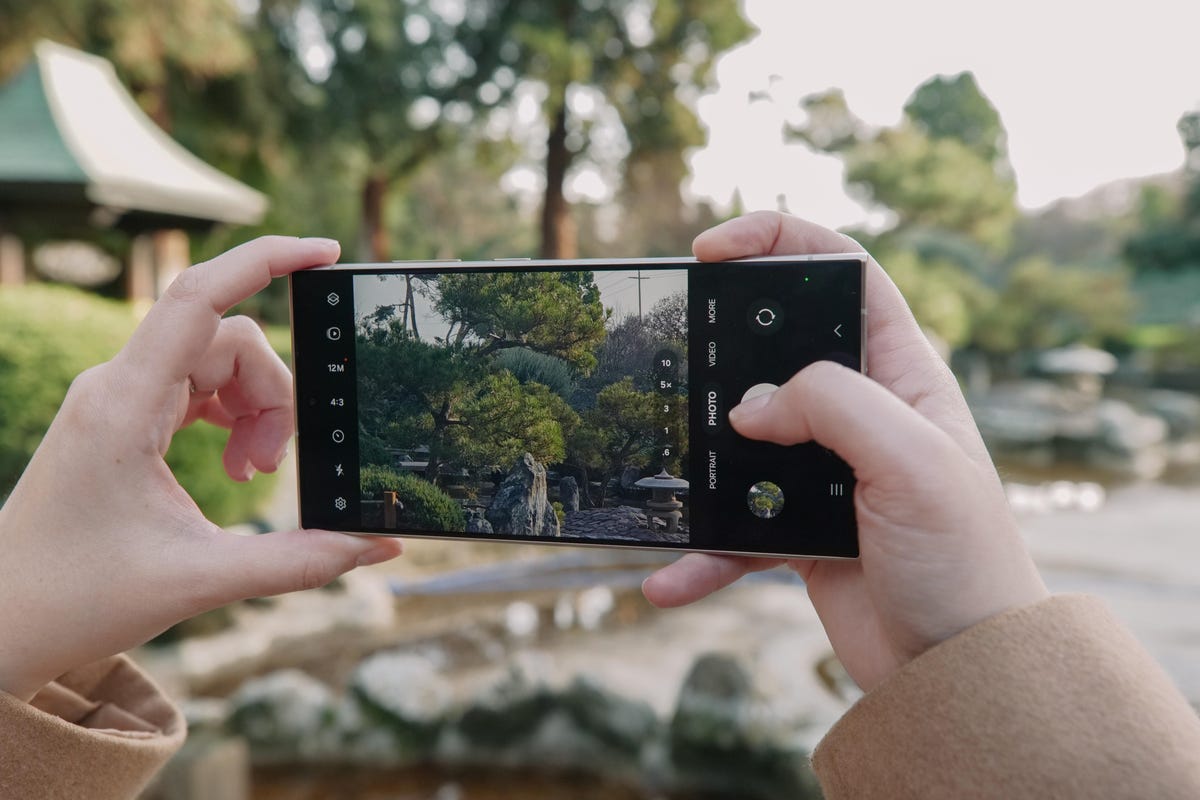
The biggest difference between the Galaxy S23 Ultra’s camera and the Galaxy S24 Ultra’s is the latter’s new 50-megapixel telephoto camera with a 5x optical zoom. That replaces the Galaxy S23 Ultra’s 10-megapixel telephoto camera with a 10x optical zoom, a choice that Samsung made after hearing feedback that users generally preferred to zoom between 2x and 5x.
Read more: Samsung Galaxy S24 Phones Have a New Zoom Trick to Get That Close-Up Photo
I haven’t had too much time to test this extensively, but I’m already seeing a difference. Take a look at the 5x zoom photos below of a wooden sign I came across at a San Jose, California, park. The photos may look similar at first, but you can see the changes when enlarging the images. The text is sharper in the Galaxy S24 Ultra’s photo, and there’s less image noise.
Galaxy S24 Ultra


Galaxy S23 Ultra


Image quality aside, Samsung also introduced some new camera tricks on the Galaxy S24 Ultra. While Generative Edit may have gotten a lot of attention following Samsung’s announcement, Instant Slow-Mo has impressed me the most so far. I just hold down on a video clip I captured and the phone converts it into a slow motion video by generating extra frames. I can preview how the clip will look in slow motion by pressing and lifting my finger to switch between the regular and slowed-down footage.
Taken together, it seems like Galaxy AI has the potential to make Samsung’s phones more useful and helpful. Most of the features that are currently available, like Circle to Search and note summaries, feel practical rather than gimmicky. But the bigger question is whether Samsung will be able to meaningfully differentiate its offerings moving forward, especially since Google’s Pixel phones provide similar functionality and Samsung plans to bring Galaxy AI to the Galaxy S23 lineup as well.
Editors’ note: CNET is using an AI engine to help create some stories. For more, see this post.
Technologies
Today’s NYT Strands Hints, Answers and Help for Nov. 28 #635
Here are hints and answers for the NYT Strands puzzle for Nov. 28, No. 635.
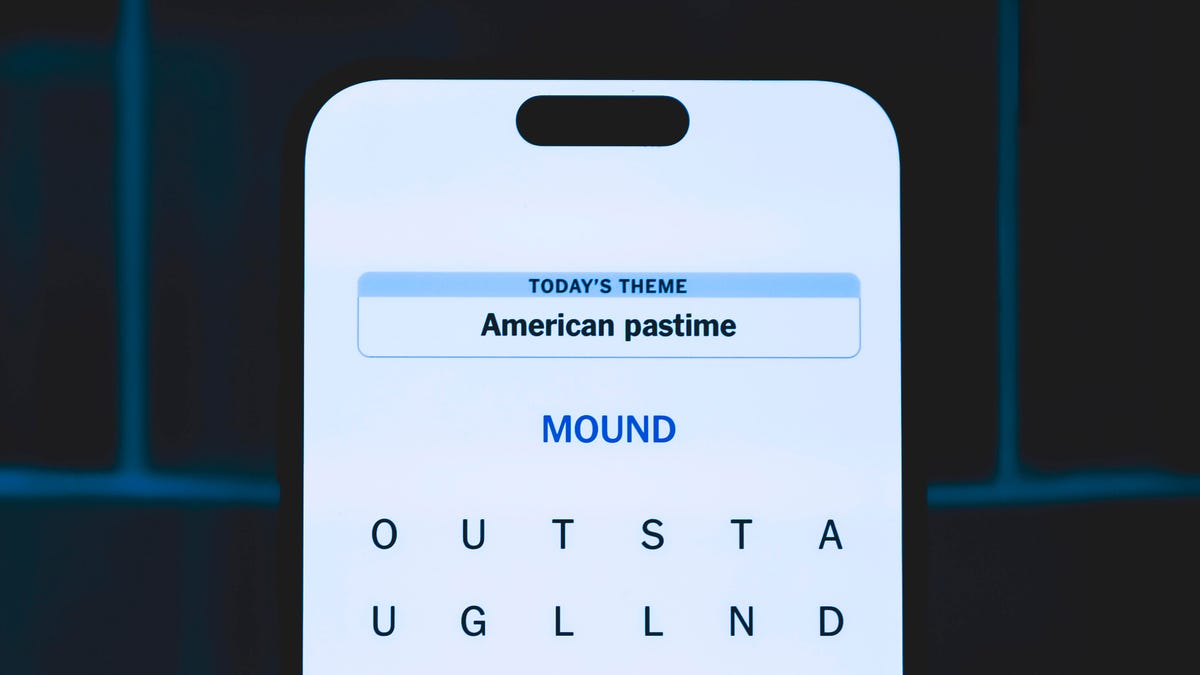
Looking for the most recent Strands answer? Click here for our daily Strands hints, as well as our daily answers and hints for The New York Times Mini Crossword, Wordle, Connections and Connections: Sports Edition puzzles.
Today’s NYT Strands puzzle is pretty tricky. If you’re not familiar with certain superstitious beliefs, you might not find all the answers. And some of the answers are difficult to unscramble, so if you need hints and answers, read on.
I go into depth about the rules for Strands in this story.
If you’re looking for today’s Wordle, Connections and Mini Crossword answers, you can visit CNET’s NYT puzzle hints page.
Read more: NYT Connections Turns 1: These Are the 5 Toughest Puzzles So Far
Hint for today’s Strands puzzle
Today’s Strands theme is: If all else fails…
If that doesn’t help you, here’s a clue: Don’t tell, it won’t come true.
Clue words to unlock in-game hints
Your goal is to find hidden words that fit the puzzle’s theme. If you’re stuck, find any words you can. Every time you find three words of four letters or more, Strands will reveal one of the theme words. These are the words I used to get those hints but any words of four or more letters that you find will work:
- GLUB, RATS, TARN, DALE, FONT, FOUNT, LASH
Answers for today’s Strands puzzle
These are the answers that tie into the theme. The goal of the puzzle is to find them all, including the spangram, a theme word that reaches from one side of the puzzle to the other. When you have all of them (I originally thought there were always eight but learned that the number can vary), every letter on the board will be used. Here are the nonspangram answers:
- DANDELION, STAR, COIN, FOUNTAIN, LADYBUG, EYELASH
Today’s Strands spangram
Today’s Strands spangram is MAKEAWISH. To find it, start with the M that’s three letters down on the far right, and wind backwards.
Technologies
Today’s NYT Connections Hints, Answers and Help for Nov. 28, #901
Here are some hints and the answers for the NYT Connections puzzle for Nov. 28, #901.
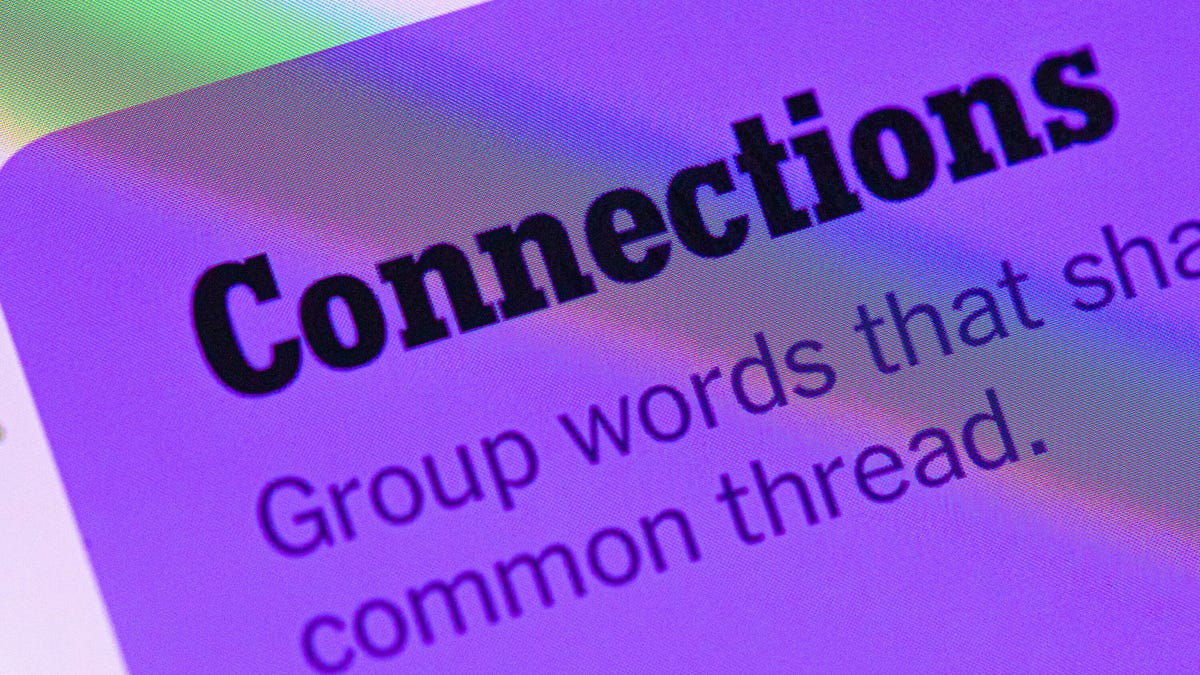
Looking for the most recent Connections answers? Click here for today’s Connections hints, as well as our daily answers and hints for The New York Times Mini Crossword, Wordle, Connections: Sports Edition and Strands puzzles.
Today’s NYT Connections puzzle is kind of tough. If you need help sorting the answers into groups, you’re in the right place. Read on for clues and today’s Connections answers.
The Times now has a Connections Bot, like the one for Wordle. Go there after you play to receive a numeric score and to have the program analyze your answers. Players who are registered with the Times Games section can now nerd out by following their progress, including the number of puzzles completed, win rate, number of times they nabbed a perfect score and their win streak.
Read more: Hints, Tips and Strategies to Help You Win at NYT Connections Every Time
Hints for today’s Connections groups
Here are four hints for the groupings in today’s Connections puzzle, ranked from the easiest yellow group to the tough (and sometimes bizarre) purple group.
Yellow group hint: Appropriate.
Green group hint: I win!
Blue group hint: Musical instrument.
Purple group hint: Time to talk.
Answers for today’s Connections groups
Yellow group: Fitting.
Green group: Achieve victory over.
Blue group: Parts of an electric guitar.
Purple group: Phonetic elements of speech.
Read more: Wordle Cheat Sheet: Here Are the Most Popular Letters Used in English Words
What are today’s Connections answers?
The yellow words in today’s Connections
The theme is fitting. The four answers are fair, just, proper and right.
The green words in today’s Connections
The theme is achieve victory over. The four answers are beat, best, take and worst.
The blue words in today’s Connections
The theme is parts of an electric guitar. The four answers are fret, peg, pickup and string.
The purple words in today’s Connections
The theme is phonetic elements of speech. The four answers are intonation, loudness, rhythm and stress.
Technologies
Anker’s New MagSafe Car Mount Keeps Your Phone Cool While Charging, and It’s 30% Off for Black Friday
Get wired-like charging speeds and MagSafe compatibility with Anker’s wireless car charging bundle for $62.99.
Black Friday is the best time of the year to upgrade the little essentials that make your everyday tech life more pleasant. I’ve found the perfect deal to amp up the phone charging setup in your car. This Anker MagSafe wireless car charging bundle is 30% off for the holidays, and it gives your iPhone a fast and steady way to power up while you navigate. It delivers up to 25-watt wireless charging speeds and with onboard active cooling, your phone stays comfortable to the touch.
Get it now for $62.99 verses the list price of $89.99.
What sets this charger apart is that its performance and cooling tech is built into a surprisingly compact package. The stand uses an ultra-strong Qi2 magnetic lock to keep your phone secure through bumps and turns. You can even tilt the mount and switch between portrait and landscape modes for navigation without blocking the view. The bundle has everything you need to get started including a 60-watt dual-USB-C charger, an adequately long USB-C cable, and cable organizers for a clean setup. Anker also includes a two-year warranty for peace of mind.
If you are getting your car prepped up for driving to a holiday vacation or just need a faster charging mount for your daily commute, this deal makes a lot of sense. CNET’s experts are also tracking more Black Friday and Cyber Monday picks across Apple products, headphones, and more, so you can score more savings before the sales season wraps up.
MOBILE DEALS OF THE WEEK
-
$749 (save $250)
-
$475 (save $175)
-
$499 (save $300)
-
$900 (save $400)
Why this deal matters
A high quality charger is a great addition to any car to speedily top up your phone on the go. You will especially want to look out for options from a top-tier brand like Anker for its fast charging speeds and reliability. This Black Friday deal is an excellent opportunity to save big on a staple car accessory. With holiday shopping heating up and tech accessories being one of the most popular categories, we expect the deal to sell out quick. So don’t wait too long before jumping on it.
Don’t miss any of our unbiased tech content and lab-based reviews. Add CNET as a preferred Google source.
Join Our Daily Deals Text Group!
Get hand-picked deals from CNET shopping experts straight to your phone.
By signing up, you confirm you are 16+ and agree to receive recurring marketing messages at the phone number provided. Consent is not a condition of purchase. Reply STOP to unsubscribe. Msg & data rates may apply. View our Privacy Policy and Terms of Use.
-

 Technologies3 года ago
Technologies3 года agoTech Companies Need to Be Held Accountable for Security, Experts Say
-

 Technologies3 года ago
Technologies3 года agoBest Handheld Game Console in 2023
-

 Technologies3 года ago
Technologies3 года agoTighten Up Your VR Game With the Best Head Straps for Quest 2
-

 Technologies4 года ago
Technologies4 года agoBlack Friday 2021: The best deals on TVs, headphones, kitchenware, and more
-

 Technologies4 года ago
Technologies4 года agoVerum, Wickr and Threema: next generation secured messengers
-

 Technologies4 года ago
Technologies4 года agoGoogle to require vaccinations as Silicon Valley rethinks return-to-office policies
-

 Technologies4 года ago
Technologies4 года agoOlivia Harlan Dekker for Verum Messenger
-

 Technologies4 года ago
Technologies4 года agoiPhone 13 event: How to watch Apple’s big announcement tomorrow

